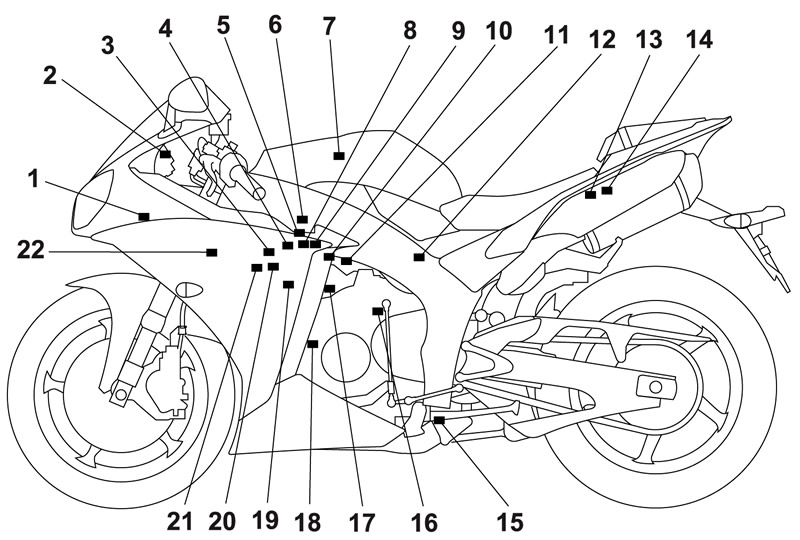Despite the same volume of intake air, the fuel volume requirement varies by the engine operating conditions, such as acceleration, deceleration, or operating under a heavy load. Carburetors that meter the fuel through the use of jets have been provided with various auxiliary devices, so that an optimum air-fuel ratio can be achieved to accommodate the constant changes in the operating conditions of the engine.
As the requirements for the engine to deliver more performance and cleaner exhaust gases increase, it becomes necessary to control the air-fuel ratio in a more precise and finely tuned manner. To accommodate this need, this model has adopted an electronically controlled fuel injection (FI) system, in place of the conventional carburetor system. This system can achieve an optimum air-fuel ratio required by the engine at all times by using a microprocessor that regulates the fuel injection volume according to the engine operating conditions detected by various sensors. The adoption of the FI system has resulted in a highly precise fuel supply, improved engine response, better fuel economy, and reduced exhaust emissions.

Intake air temperature sensor; 2. Engine trouble warning light; 3. Air induction system solenoid; 4. Atmospheric pressure sensor; 5. Intake air pressure sensor; 6. Intake funnel servo motor; 7. Secondary injectors; 8. Throttle servo motor; 9. Throttle position sensor; 10. Accelerator position sensor; 11. Primary injectors; 12. Fuel pump; 13. Lean angle sensor; 14. Relay unit (fuel pump relay); 15. O2 sensor; 16. Speed sensor; 17. Coolant temperature sensor; 18. Crankshaft position sensor; 19. Spark plugs; 20. Ignition coils; 21. Cylinder identification sensor; 22. ECU (engine control unit)
